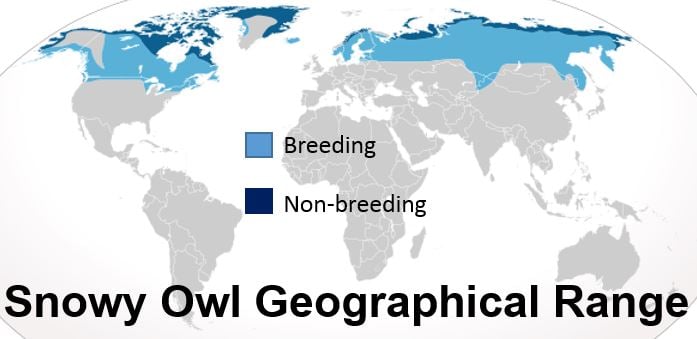Snowy owls have flown south for the winter season from the arctic in larger numbers for the second successive year. A successful breeding season has led to many more young owls.
Bird enthusiasts have until at least late February to catch sight of the magnificent predator.
Over the past week, sightings of snowy owls have increased significantly, with growing reports of the majestic bird’s presence emerging all over the upper parts of North America.
Seacoast Online quoted executive director of the Center for Wildlife in York, Maine, Kristen Lamb, who said:
“The timing is about right. We thought the owls dispersed in large numbers when they needed food, but recent research suggests that it’s likely due to a successful breeding year and there are a lot more young owls.”
Last winter, more than 50 snowy owls were seen in the Seacoast. Ms. Lamb said it is too early to determine whether the numbers will match or exceed last winter’s.
Staff at Windsor International Airport, southern Ontario, plan to trap, band and release 35 snowy owls over the next couple of months, which is about the same number as last winter. Airport Manager Phil Roberts said at least a dozen snowy owls have been spotted in December alone.
Children and young adults brought up on Harry Potter stories will be familiar with his pet snowy owl ‘Hedwig’.
In an interview with CBC, Mr. Roberts said:
“At the very end of December, we’ve had four to five [banded] in the course of a couple days and still two to three birds that are loafing around.”
The Snowy Owl
The Snowy Owl (Bubo scandiacus) has unmistakable white feathers that reflect its Arctic origins.
These predator birds breed on the Arctic tundra, where females lay between 3 and 11 eggs. Clutch size depends on how much food is available. When food is scarce the owl may not breed at all.
Snowy Owls, which usually pair for life, are extremely territorial and will defend their nests fiercely against all threats, including wolves.
Young males get whiter as they become older, while females remain slightly darker with dusky spotting. Some elderly males can become completely white.
With their keen eyesight, excellent hearing, and sharp talons, snowy owls are brilliant hunters.
Their favorite meal is lemmings. An adult may consume more than 1,600 lemmings in just one year, i.e. about five per day. They also eat fish, birds, rodents and rabbits.
These majestic birds may sometimes stay in the Arctic tundra all year round, but are more likely to migrate to Canada, northern USA, Europe and Asia. How far they migrate is usually determined by the availability of lemmings.
Video – Magic of the Snowy Owl


